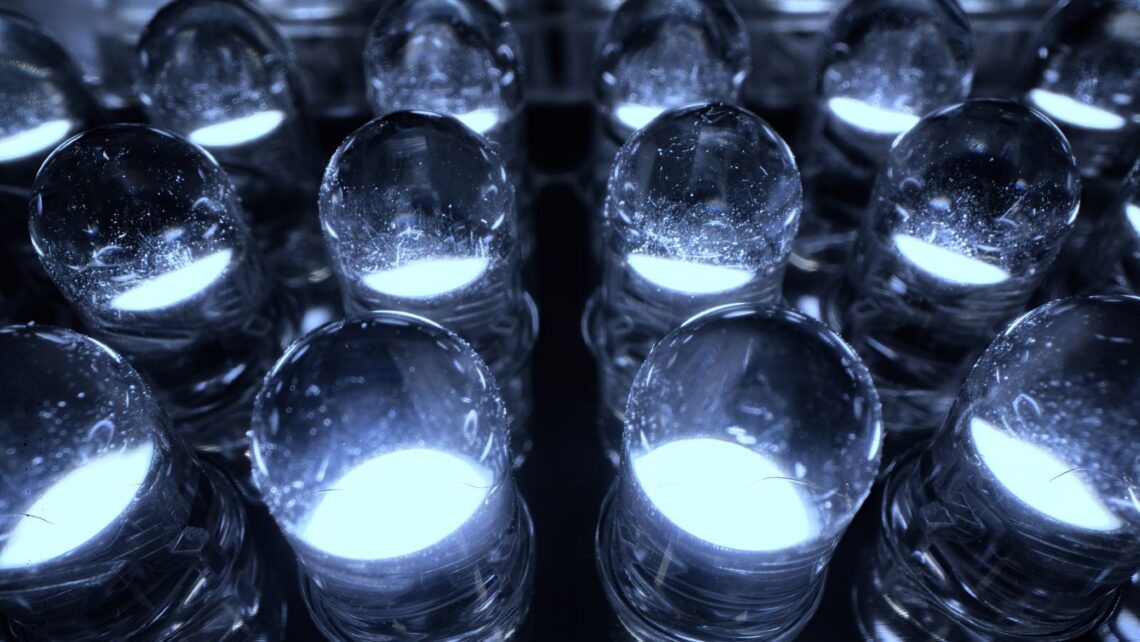
LED Bulbs are recently in demand as they are more efficient than the common incandescent lights used in households and companies. Some of the benefits associated with this LED light bulb include that they require less power and time to start emitting light with more extended periods of life expectancy. However, there is a significant downside.
Although most commercial LED bulbs emit a reasonable amount of blue light, it is a concern since it affects the health of the eye as well as sleep interruption. This is so because blue light interferes with the production of melatonin hormone, which controls sleep and wakefulness in human beings when it is at night.
To counter this, the scientists, who were awarded a grant by the U. S. National Science Foundation, developed a new type of LED that produces lower levels of blue light but without the trade-off of the quality of the light.
How blue light from LEDs is impacting your health in unexpected ways
Another generic issue that can be seen in most of the LED lights that are on the market today is that they possess a high level of blue light. Blue light exposure has been linked to eye diseases and sleep disturbances among people. Susceptible to cataracts and other eye complications because it strains the eyes a lot for quite some time.
In addition, it has been established that blue light inhibits the production of melatonin in the body in normal quantity. It is also very destructive at night as it is known to interfere with circadian rhythms and the sleep cycle which may lead to problems such as sleeping disorders, insomnia, and fatigue.
This problem is made worse by the numerous LEDs that are used in homes, workplaces, and electronics like phones and laptops. The desire to rectify these health effects has precipitated the search for viable solutions that minimize or eliminate blue light while retaining the utility of LEDs.
The breakthrough LED prototype that could revolutionize your home lighting
The solution to this issue can be found in the creation of a new prototype of LED that was published in ACS Applied Materials & Interfaces by researchers from the University of Houston. In the case of traditional LED bulbs, they utilize blue LEDs accompanied by yellow-emitting phosphors to achieve the standard white light equivalent to daylight.
This combination, while it can generate a lot of light, does so while continuing to transmit a significant amount of blue light. Previous efforts in cutting back blue light exposure entailed introducing red-emitting phosphors which had the effect of hiding the unwanted hue.
The researchers were able to further enhance this method by synthesizing a new luminescent crystalline phosphor with europium. When incorporated into a violet LED, this phosphor also achieved warm white light, but free of the detrimental blue spectrum.
What you need to know about the new LED prototype’s practical uses and future potential
This is because, despite the successful rendition of the primary prototype LED, there is still a lot more that needs to be done before an efficient and effective LED can be produced on a large enough scale for daily use. Some of the issues thus include the need to determine whether the new phosphor material can perform optimally and for how long as well as in what conditions.
In thermal stability tests, the developed new phosphor exhibited stable color emission at operating temperatures up to about 149 degrees centigrade or 301 degrees Fahrenheit which is beneficial in commercial LED lighting systems. Furthermore, moisture experiments on the longevity of the phosphor demonstrated that the phosphor color and the intensity of the light emitted by the panels remained constant long term, proving its viability in use in practical applications.
This means that the creation of a new LED prototype that minimizes blue light discharge is a significant innovation in the field of lighting. With this innovation, one will be able to overcome the issues of health effect that comes with blue light while continuing to support energy efficiency and the visual appearance of traditional LEDs.
The application of a new phosphor material with europium in the prototype effectively generates a warm white light that replicates natural sunlight to be used in indoor lighting. While further research is needed to commercialize the technology behind these LEDs, it is a positive development for public health and well-being that contributes to the advancement of energy-saving lighting in the future.
As this technology progresses further down this path, it will be possible to make a positive change and provide people across the globe with improved lighting conditions that enhance comfort and well-being.
TrendForce 2024 Global LED Lighting Market Analysis
Release Date: 01 February 2024 / 31 July 2024
Language: Traditional Chinese / English
Format: PDF and Excel
Page: 90-100 / Semi-Annual
|
If you would like to know more details , please contact:
|












